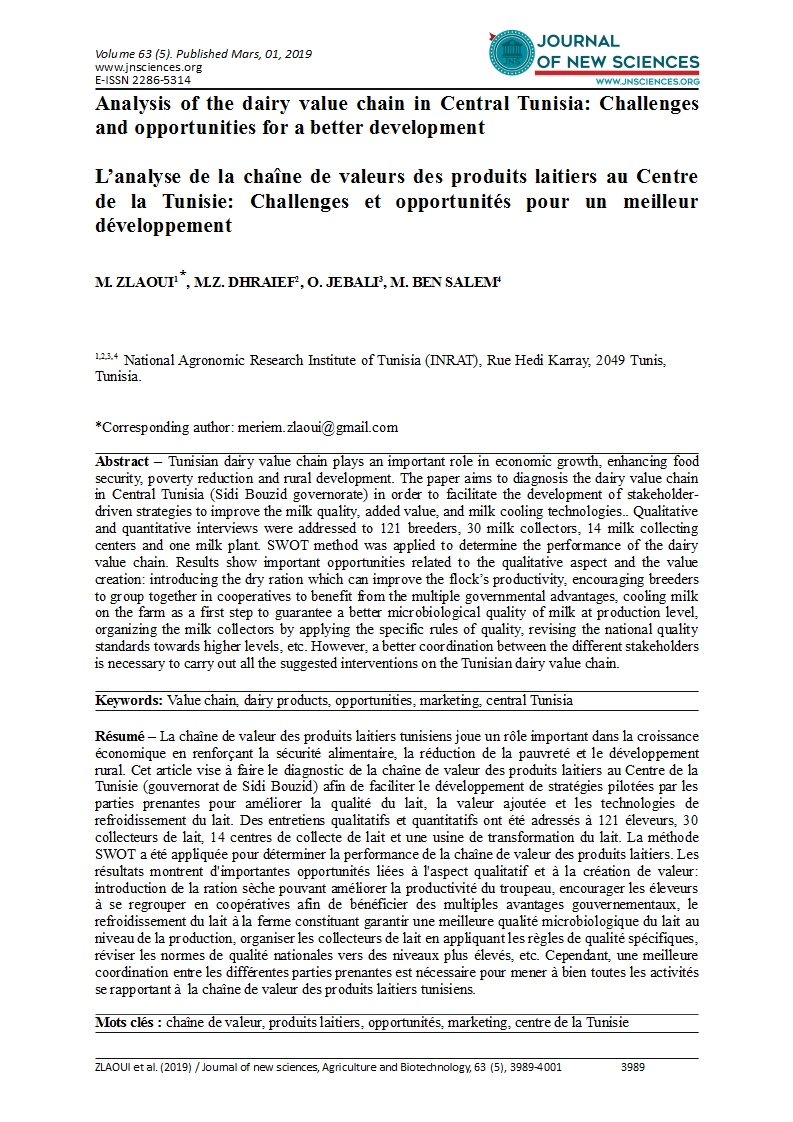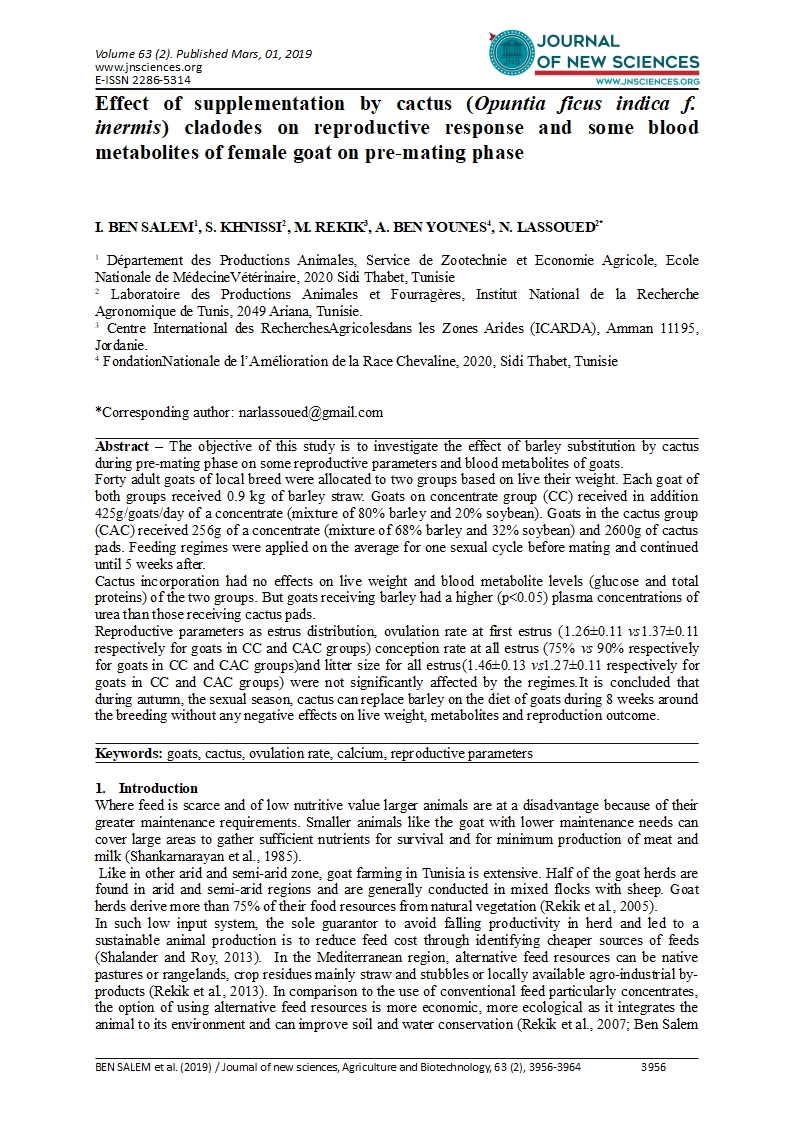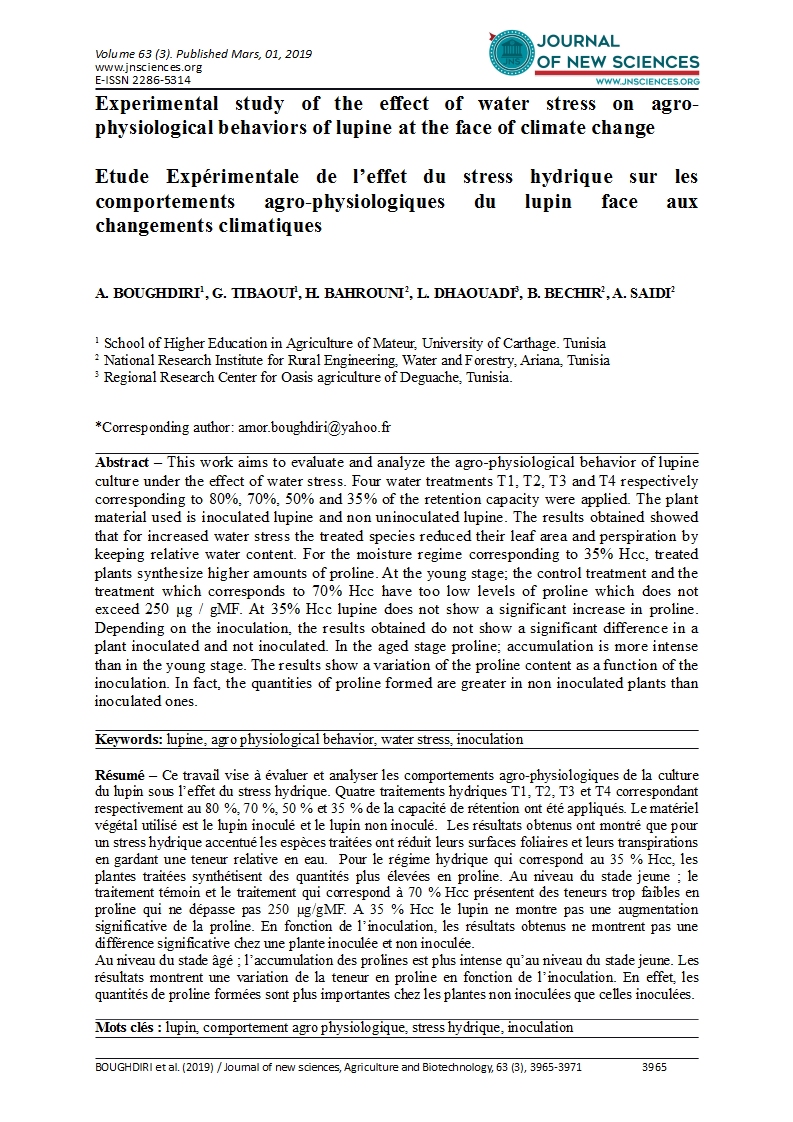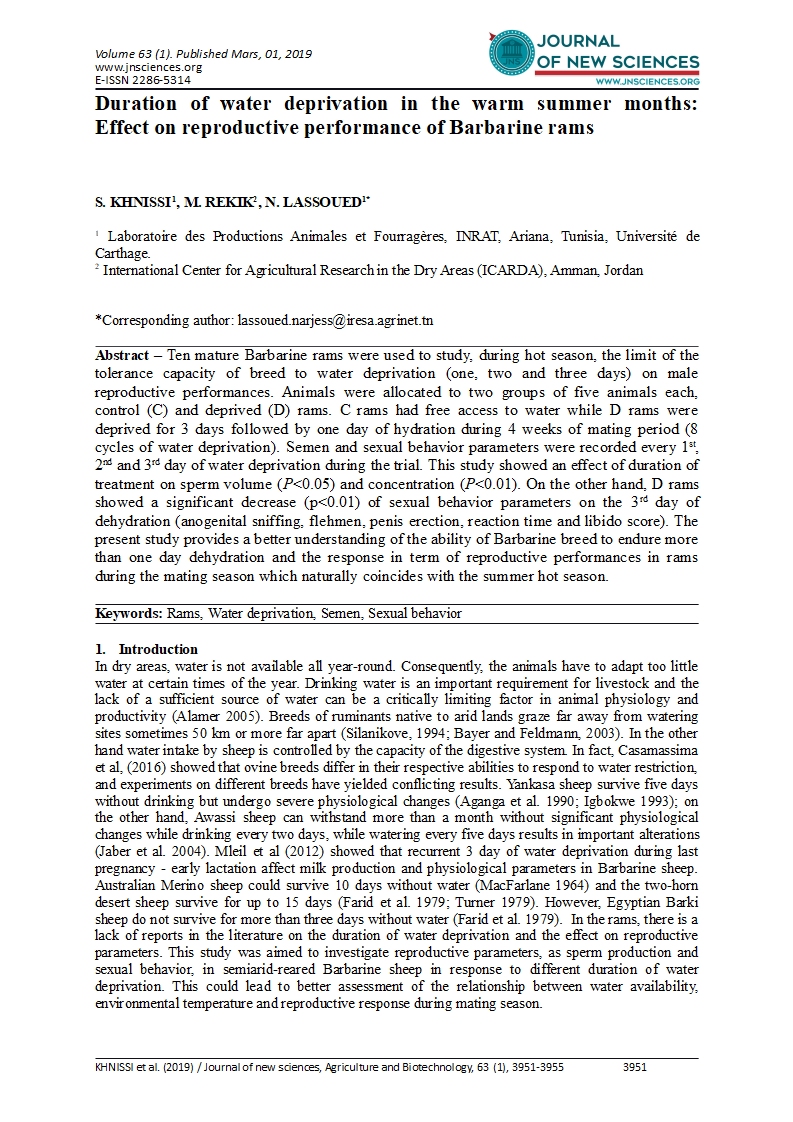- Category: Volume 63
- Hits: 8142
Analysis of the apple value chain at Sbiba region, Tunisia
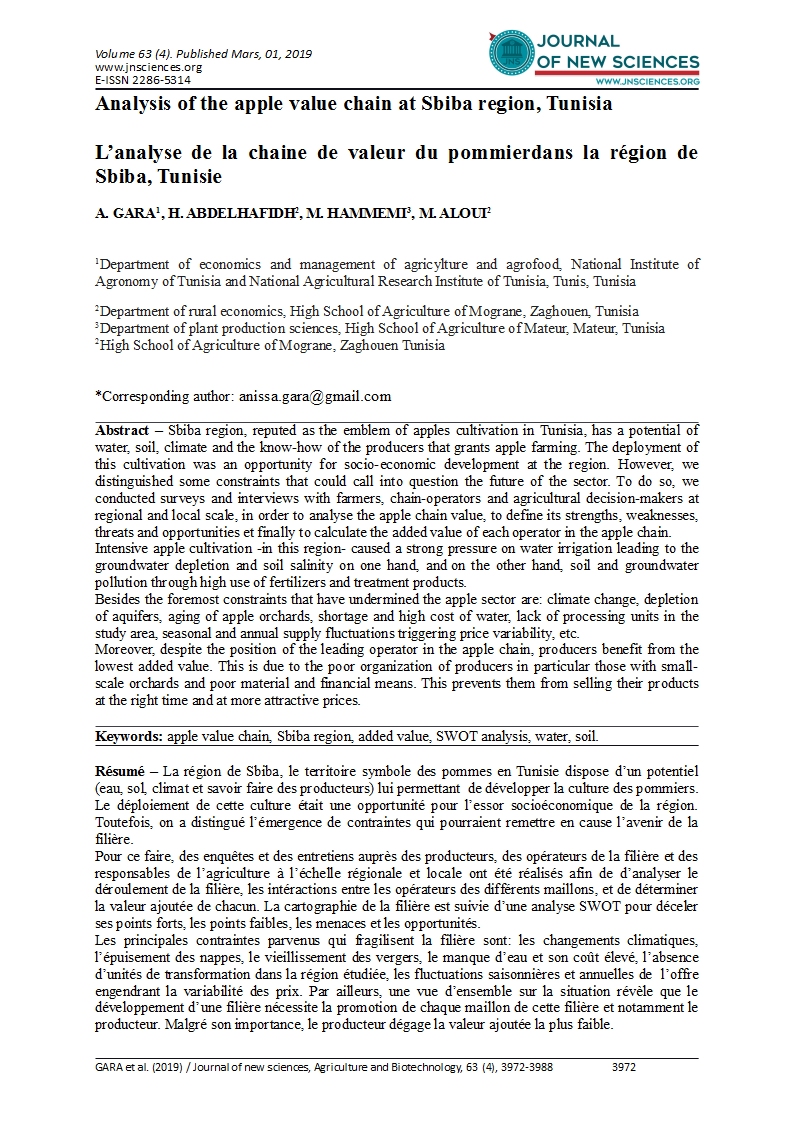
L’analyse de la chaine de valeur du pommierdans la région de Sbiba, Tunisie
A. GARA1
H. ABDELHAFIDH2
M. HAMMEMI3
M. ALOUI2
1Department of economics and management of agricylture and agrofood, National Institute of Agronomy of Tunisia and National Agricultural Research Institute of Tunisia, Tunis, Tunisia
2Department of rural economics, High School of Agriculture of Mograne, Zaghouen, Tunisia
3Department of plant production sciences, High School of Agriculture of Mateur, Mateur, Tunisia
2High School of Agriculture of Mograne, Zaghouen Tunisia
Abstract – Sbiba region, reputed as the emblem of apples cultivation in Tunisia, has a potential of water, soil, climate and the know-how of the producers that grants apple farming. The deployment of this cultivation was an opportunity for socio-economic development in the region. However, we distinguished some constraints that could call into question the future of the sector. To do so, we conducted surveys and interviews with farmers, chain-operators and agricultural decision-makers at regional and local scale, in order to analyse the apple chain value, to define its strengths, weaknesses, threats and opportunities et finally to calculate the added value of each operator in the apple chain. Intensive apple cultivation -in this region- caused a strong pressure on water irrigation leading to the groundwater depletion and soil salinity on one hand, and on the other hand, soil and groundwater pollution through high use of fertilizers and treatment products. Besides the foremost constraints that have undermined the apple sector are: climate change, depletion of aquifers, aging of apple orchards, shortage and high cost of water, lack of processing units in the study area, seasonal and annual supply fluctuations triggering price variability, etc. Moreover, despite the position of the leading operator in the apple chain, producers benefit from the lowest added value. This is due to the poor organization of producers, in particular, those with small-scale orchards and poor material and financial means. This prevents them from selling their products at the right time and at more attractive prices.
Keywords: apple value chain, Sbiba region, added value, SWOT analysis, water, soil.

